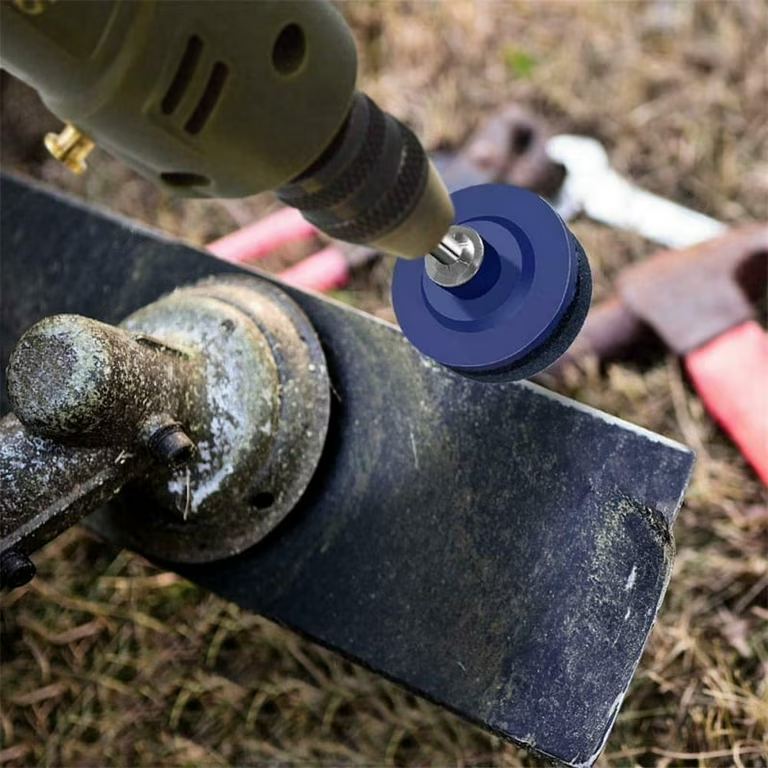
How to Sharpen Your Lawn Mower Blade: A Step-by-Step Guide
A dull lawn mower blade can leave your grass ragged and unhealthy. It can also damage your mower and make mowing more difficult. That’s why it’s important to sharpen your mower blade regularly.
Why Sharpen Your Lawn Mower Blade?
A sharp blade cuts cleanly through grass, resulting in a healthier lawn. A dull blade, on the other hand, tears the grass, leaving it brown and susceptible to disease. Additionally, a sharp blade is less likely to damage your mower’s engine.
When to Sharpen Your Lawn Mower Blade
As a general rule, you should sharpen your mower blade once or twice a year. However, if you notice that your grass is being torn instead of cut, or if your mower is struggling to cut through the grass, it’s time to sharpen the blade.

How to remove the lawnmower blade
Step-by-Step Guide:
- Turn the Mower Upside Down: This will give you easy access to the blade.
- Locate the Blade Bolt: This is usually a large bolt in the center of the blade.
- Use a Wrench or Socket Wrench: Loosen and remove the blade bolt.
- Remove the Blade: Once the bolt is removed, the blade should come off easily. However, if it’s stuck, you might need to tap it gently with a rubber mallet.
Visual Guide:
If you need a more visual explanation, consider searching for a video tutorial on platforms like YouTube. Many videos demonstrate the process step-by-step.
Remember:
- Blade Orientation: Take note of the blade’s orientation before removing it. This will help you reinstall it correctly.
- Blade Balance: If you’re sharpening the blade yourself, ensure it’s balanced. An unbalanced blade can cause vibrations and damage to your mower.
By following these steps and prioritizing safety, you can easily remove your lawn mower blade for sharpening or replacement.
Tools and Materials You’ll Need
- Safety goggles: Protect your eyes from flying debris.
- Work gloves: Protect your hands from cuts and scrapes.
- Socket wrench: To remove the mower blade bolt.
- Vice grips: To hold the blade securely.
- Metal file: To sharpen the blade.
- Wire brush: To clean the blade.
- Balance bar: To check the balance of the blade.

Reinstalling the Blade
Here’s a step-by-step guide on how to reinstall your sharpened lawn mower blade:
-
Align the Blade:
- Ensure the blade is positioned correctly on the spindle. The cutting edge should face the correct direction. Consult your owner’s manual for specific orientation.
-
Insert the Blade Bolt:
- Insert the blade bolt through the center hole of the blade and into the spindle.
-
Hand-Tighten the Bolt:
- Use a wrench to hand-tighten the bolt. This will ensure the threads engage properly.
-
Tighten the Bolt Securely:
- Using a socket wrench, tighten the bolt to the manufacturer’s specified torque. Overtightening can damage the blade or spindle. Refer to your owner’s manual for the exact torque specification.
-
Check for Tightness:
- Once the bolt is tightened, give the blade a gentle tug to ensure it’s securely fastened.
Important Safety Tips:
- Wear Protective Gear: Always wear safety goggles and gloves to protect your eyes and hands.
- Disconnect the Spark Plug: Before working on the blade, disconnect the spark plug wire to prevent accidental starting.
- Use the Right Tools: Use the appropriate tools for the job to avoid injury.
- Balance the Blade: An unbalanced blade can cause vibrations and damage to the mower. If you suspect an imbalance, consult a professional.
Additional Tips:
- Replace Worn Washers: If the washers on the blade bolt are worn, replace them with new ones.
- Inspect the Spindle: Check the spindle for damage or excessive wear.
- Test the Blade: After reinstalling the blade, start the mower and test it on a small patch of grass. Listen for any unusual noises or vibrations.
By following these steps and safety precautions, you can safely and efficiently reinstall your sharpened lawn mower blade.

Step-by-Step Guide to Sharpen Your Lawn Mower Blade
-
Remove the Blade:
- Disconnect the spark plug wire to prevent accidental starting.
- Turn the mower upside down.
- Use a socket wrench to remove the bolt holding the blade in place.
- Carefully remove the blade.
-
Clean the Blade:
- Use a wire brush to remove any grass, dirt, or rust from the blade.
- Pay close attention to the cutting edge.
-
Check the Blade’s Balance:
- Use a balance bar to check the balance of the blade. A balanced blade will spin smoothly.
- If the blade is unbalanced, you may need to have it professionally sharpened or replaced.
-
Sharpen the Blade:
- Clamp the blade securely in a vice grip.
- Use a metal file to sharpen the cutting edge of the blade.
- File in one direction only, from the heel to the toe of the blade.
- Maintain a consistent angle of about 45 degrees.
- Sharpen both sides of the blade evenly.
-
Check the Sharpness:
- Once you’ve finished sharpening the blade, you can test its sharpness by gently running your finger along the cutting edge.
- You should feel a slight resistance.
-
Reinstall the Blade:
- Reinstall the blade, making sure it’s securely fastened.
- Reconnect the spark plug wire.
Maintenance Tips
To keep your lawn mower running smoothly and efficiently, regular maintenance is key. Here are some essential tips:
Pre-Season Maintenance:
- Clean the Mower: Remove any grass clippings, dirt, or debris from the mower deck, engine, and air filter.
- Change the Oil: Use the recommended oil type and change it before the first use of the season.
- Replace the Spark Plug: A worn-out spark plug can hinder performance. Replace it with a new one.
- Check the Air Filter: Clean or replace the air filter to ensure proper airflow to the engine.
- Sharpen the Blade: A sharp blade cuts cleanly, promoting healthy grass growth. Sharpen it or replace it if it’s damaged.
Ongoing Maintenance:
- Regular Cleaning: After each use, clean the mower deck and underside to prevent rust and debris buildup.
- Fuel Storage: If storing the mower for an extended period, drain the gas tank or add a fuel stabilizer to prevent fuel degradation.
- Tire Pressure: Check tire pressure regularly and inflate them to the recommended level.
- Belt Inspection: Inspect the drive belt for wear and tear. Replace it if necessary.
- Battery Maintenance: For battery-powered mowers, charge the battery fully and store it in a cool, dry place.
Additional Tips:
- Read the Owner’s Manual: Refer to the owner’s manual for specific maintenance instructions and troubleshooting tips.
- Avoid Overloading: Don’t cut too much grass at once, as this can strain the engine.
- Mow Regularly: Regular mowing promotes healthy grass growth and reduces the need for frequent, long mowing sessions.
- Proper Blade Height: Adjust the blade height to the appropriate level for your grass type.
- Avoid Wet Grass: Mowing wet grass can damage the mower and leave clumps of grass.
By following these maintenance tips, you can extend the life of your lawn mower and ensure it performs optimally.
Additional Tips
- Don’t over-sharpen the blade. A little bit of sharpening goes a long way. Over-sharpening can weaken the blade and make it more susceptible to damage.
- Consider professional sharpening. If you’re not comfortable sharpening the blade yourself, you can take it to a professional sharpening service.
- Inspect the blade for damage. If the blade is cracked or chipped, it will need to be replaced.
- Maintain your mower. Regular maintenance, such as cleaning and oiling, will help keep your mower running smoothly.
By following these steps and tips, you can keep your lawn mower blade sharp and your lawn looking its best.





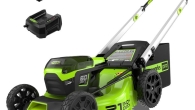
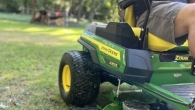
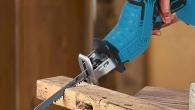

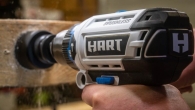


Leave a Reply